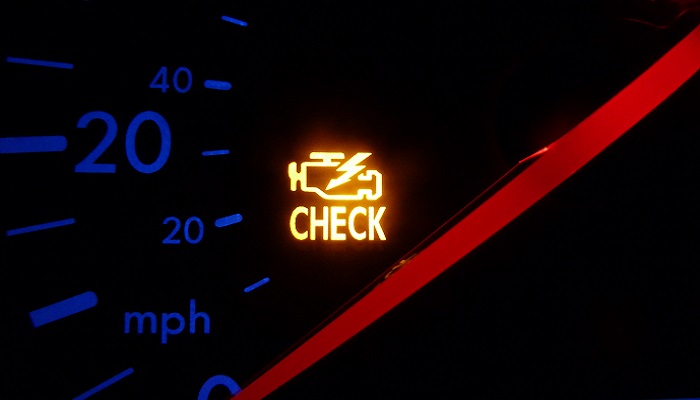
I will watch a serial killer documentary in the middle of the night, lights out, by myself, on Friday the 13th while a black cat crosses my path. I will stand at the top of the Empire State Building and look down at the miniaturized streets below. I will pet a snake while a mouse scurries around my toes. And I will get a root canal in public and attempt a speaking engagement in the process.
But you know what really strikes fear into my heart? My check engine light.
Our dash can light up like a Christmas tree. Some of the lights, however, are not so festive. It can feel like deciphering the texts your bestie gets from her situationship — it can mean quite a few things.
The check engine light, also known as the malfunction indicator lamp, is used to indicate a malfunction. The icon is typically yellow in the shape of an outlined engine. Some cars have a literal yellow shape with “check engine” or “maintenance required.”
Rather than immediately define what it can mean, let me give you a bit of reassurance. It does not mean you need to hit the emergency eject button on your seat to fly out before it explodes like in a scene from a Bond film. Typically, if it flashes (or dings), you don’t need to pull over immediately and begin your freakout. It’s 2023, and we’re more mature and sophisticated. Now, we schedule our freakouts. After you’ve marked that off your to-do list, you do want to take your car to a mechanic as soon as possible. Unless you want to do that after the mechanic consults with you? It’s totally your choice.
I will list the possible levels of severity: a solid check engine light means it needs to be looked at, a flashing light signals an immediate need, and the universal color of stop is red. As in, stop driving your car.
Here are a few of the possibilities to give you a starting point:
1. It’s getting hot in here (but keep on all your clothes, please).
Your engine could be overheating. You may also notice the C-H indicator, the gauge that measures the engine temperature from cold to hot, is hanging a lot closer to the H than is ideal.
2. Engine problems (and we aren’t talking Google).
If you notice you’re not quite getting the standard bang for your buck in terms of gas mileage, it could indicate engine misfires. There are other engine issues as well.
3. Transmission problems. :
The transmission ensures your wheels have enough oomph to drive. In conjunction with the check engine light, you may also notice a burning smell , problems in switching gears, or odd sounds like grinding.
4. No sensor-ship here.
Just like we use senses to know if our drink is hot or if our music is loud, our vehicles have sensors that measure things. Common examples of things sensors measure include the speed of the vehicle or the emission levels. If a sensor is failing, it can trip the light to decorate our panel.
5. Did you “loose” something?
If your vehicle is missing a part, one is damaged, or one is loose, the check engine light can come on. Yes, that loose gas cap can be responsible for the vehicular equivalent of “We need to talk…” Unfortunately, we ultimately do need to talk — to a mechanic. If you don’t have a mechanic, a great resource can be word of mouth, Google, Yelp, or social media reviews. And before you know it, you’ll be up and going away, minus the ominous little engine that couldn’t!
Featured image via Wikiuser100000, CC BY-SA 3.0 via Wikimedia Commons


















